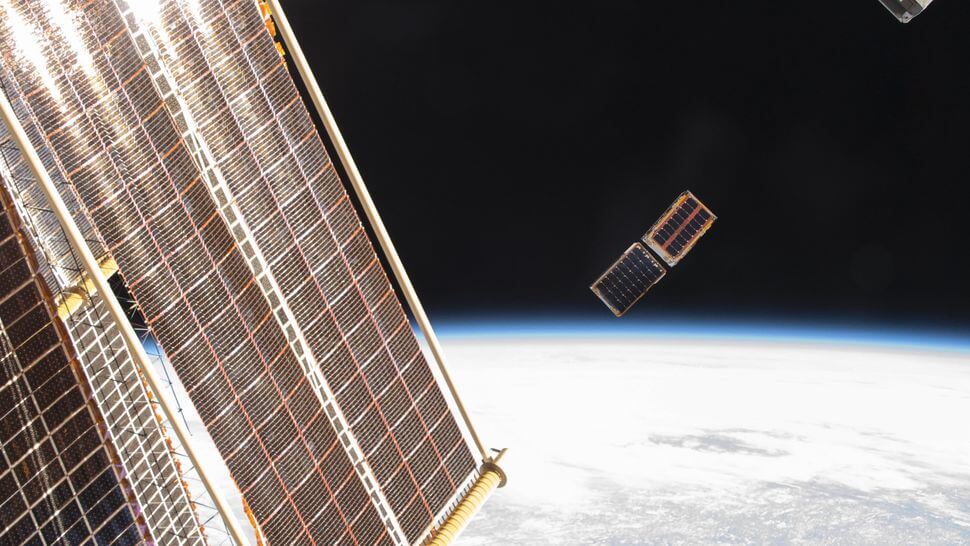Two small satellites were recently ejected from the International Space Station (ISS) to begin scientific experiments in low Earth orbit, and their leap into freedom was caught on camera.
NASA shared a new time-lapse video and images of the two cubesats‘ deployment, which occurred on April 18, 2024. The shoebox-sized satellites, named BurstCube and SNOOPI (Signals of Opportunity P-band Investigation), were released into space from the Nanoracks CubeSat Deployer (NRCSD) on the ISS.
The new footage shows BurstCube and SNOOPI released back-to-back from the NRCSD and entering low Earth orbit. While the two satellites appear very close together, they separated soon after deployment and are now tasked with their own unique objectives.

BurstCube, which was deployed first, is designed to study gamma-ray bursts — the universe’s most powerful explosions. Measuring just under 4 inches (10 centimeters) across, the satellite will search for short bursts that occur following the collisions of neutron stars, the superdense remnants of massive stars that died in supernova explosions.
Related: Tiny satellites launch from space station (photos)
“Astrophysicists are interested in these phenomena because they also produce gravitational waves, or ripples in the fabric of space-time,” according to the BurstCube mission page. “By studying both light and gravitational waves — an approach called multimessenger astronomy — they can learn more about different aspects of the event.”
BurstCube is equipped with four detectors, which allow the satellite to convert gamma rays into visible light and then into a measurable pulse of electrons, from which scientists can determine the general direction of the detected outburst.
Meanwhile, SNOOPI will demonstrate technology for measuring root zone soil moisture and snow water equivalent based on signals reflected off the surface of Earth, according to the mission’s webpage. The data collected by SNOOPI therefore has implications for crop growth forecasts, irrigation monitoring and water management, assessing fresh water availability and better understanding weather phenomena.
Both of the cubesats launched to the space station aboard SpaceX’s 30th Commercial Resupply Services mission on March 21, 2024 and were deployed as part of ELaNa 51, a mission organized by NASA’s Cubesat Launch Initiative.
Video footage of the satellite deployment on April 18 was taken from various vantage points of the space station, along with still images that were compiled to create the time-lapse videos.